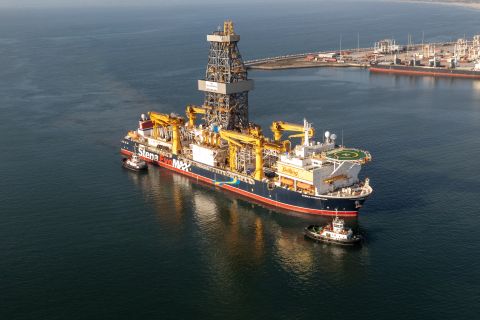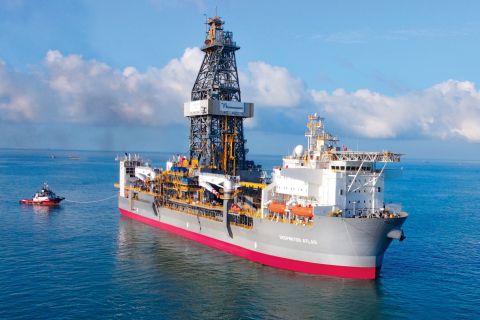Denver independent James B. Wallace is one of four founders of BWAB Inc. and Brownlie, Wallace, Armstrong and Bander Exploration Inc., both Denver-based E&P companies long active in the Rockies and Midcontinent regions. Partner Joe Bander is deceased, but Wallace, Ray Brownlie and Jerry Armstrong—with five decades in the business—still keep their hands in oil and gas, usually by taking nonoperated working interests in a variety of plays.
Wallace served on the Tom Brown Inc. board when it was sold to EnCana Corp. in 2004, "back when these resource plays were just getting started,” he says.
A stalwart of the Denver independents, today Wallace is on the boards of publicly held Delta Petroleum Corp. in Denver (of which his oldest son, John, is president); private start-up Savant Resources; and Ellora Energy in Boulder, which is to go public later this year.
Born near Los Angeles, he remembers seeing oil derricks not 100 yards from his parents’ porch in Long Beach. He is a 1951 graduate of the University of Southern California, where he obtained a B.S. in business administration. In 1953, after serving in the U.S. Marine Corps during the Korean War, he and Brownlie entered the oil business in West Texas, joining a college friend who was in the business there.
He lived in Abilene for 17 years, working as an independent oil operator in partnership with Brownlie and Armstrong. In 1970, they decided to move the partnership to Denver, where Bander joined them soon after. The quartet was active in most of the main plays in the Rockies throughout the 1970s and 1980s, often generating prospects and leasing acreage, sometimes operating. They held some of the original acreage in the giant Anschutz Ranch East Field along the Rocky Mountain Overthrust, one of the region’s largest fields, discovered in 1979 by Amoco (now part of BP).
Among other kudos, Wallace was recognized as Wildcatter of the Year in 1986 by the Independent Petroleum Association of Mountain States (IPAMS), and is also a member of the All-American Wildcatters group and the Twenty-Five Year Club of the Petroleum Industry.
Currently, he is working with three of his four sons on various ideas—the most promising is finding a way to buy, transport and sell CO2 to producers throughout the Rockies, Texas and Midcontinent. At 79, he thinks the idea of carbon sequestration helping the environment—and reviving old oil fields—is the wave of the future.
Investor Jim, what are you working on these days?
Wallace I think I got into this business 10 to 15 years too early, but I’m still in it now. We had a pretty good-size staff of around 120 back in the ’70s and ’80s, but we are down to the three of us, and two admins. We haven’t operated for quite a while, but we are drilling new wells on old assets we’ve had for long time.
Investor Are you involved in any of these resource plays?
Wallace I’ve got 55 years in the business, and it’s all been interesting. But to me, the most interesting things have happened in the last half-dozen years. These source-rock plays will be a big bonus for our country in the long run. The majors will probably end up owning all these assets when all is said and done, but the independents are who have been in there first.
But we were in the Bakken 25 years ago, along with Canadian Hunter Exploration, and we had some Mondak production up there with Tom Brown Inc. We missed this “new” Bakken play. We’re drilling some wells there now in the Muddy Ridge area in Wyoming, where EnCana determined we didn’t drill enough to get all the gas out. Tom Brown had those properties since the 1970s. We were developing Muddy Ridge on 40-acre spacing, but we’ll end up on 20s.
Investor In addition to your long-held interests, now you are pursuing CO2.
Wallace One of the things I’ve been doing for close to a year now—and it’s a puzzle to me why more people haven’t caught onto this—is looking at tertiary-recovery operations in the Rockies. All of it involves CO2. We’re trying to get into the business as a pipeline transporter and vendor of CO2 for the big producing fields in Wyoming.
Most people are thinking of it just from the producer’s point of view. Ultimately CO2 is an application that should be pervasive in the Rockies and Midcontinent. We are doing it with my sons, and with (former U.S. Commerce Secretary) Don Evans (whom I’ve known and worked with for more than 30 years since his Tom Brown days) and some other investors.
The challenge is building all the infrastructure—it could take $500 million to $1 billion just in Wyoming.
But here are some facts. Conventional domestic reserves are 22 billion barrels of oil remaining in the Lower 48, but if you put CO2 in these great old oil fields, you could produce another 89 billion barrels! That’s from Advance Resources International and the DOE. Heck, even if we recover half that, it would go a long way. These politicians keep talking about wind farms and solar projects, but to me, this old oil is the greatest unrecognized energy resource that exists in this country. It’s mind-boggling to me.
About 1.4 Bcf (billion cubic feet) a day of CO2 is being injected into 58 Permian Basin fields. It absolutely works. We think this ought to be available and utilized in dozens, if not hundreds, of other fields in the Rockies and the Midcontinent.
If CO2 were broadly available, we could really turn around our reliance on imported foreign oil. This should be the cornerstone of anybody’s energy policy.
—Leslie Haines
Recommended Reading
Shell Brings Deepwater Rydberg Subsea Tieback Onstream
2024-02-23 - The two-well Gulf of Mexico development will send 16,000 boe/d at peak rates to the Appomattox production semisubmersible.
Stena Evolution Upgrade Planned for Sparta Ops
2024-03-27 - The seventh-gen drillship will be upgraded with a 20,000-psi equipment package starting in 2026.
Shell Taps TechnipFMC for 20K System for Sparta
2024-02-19 - The deepwater greenfield project in the Gulf of Mexico targets reserves in the high-pressure Paleogene reservoir.
Rystad: More Deepwater Wells to be Drilled in 2024
2024-02-29 - Upstream majors dive into deeper and frontier waters while exploration budgets for 2024 remain flat.
E&P Highlights: April 1, 2024
2024-04-01 - Here’s a roundup of the latest E&P headlines, including new contract awards.





